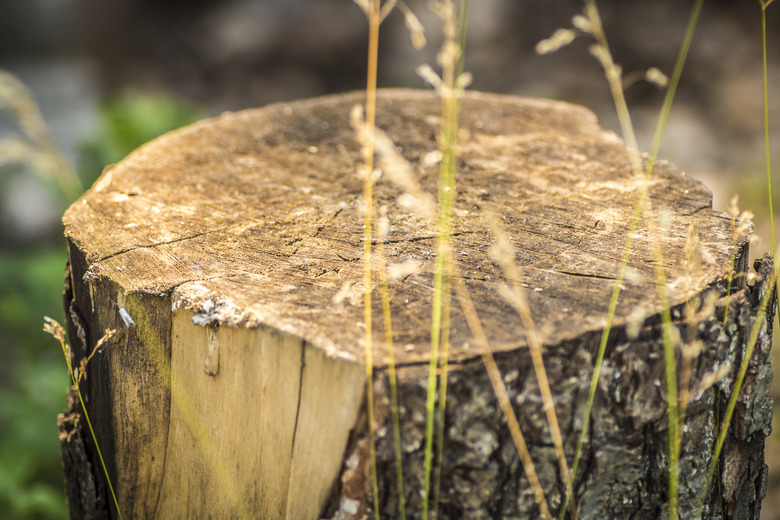How To Remove Stumps With Acid
Trees in the landscape are wonderful and beautiful, providing shade and adding value to your home. Stumps, however, are another thing entirely. They don't look nice, don't provide shade and take up space. Just like trees differ, stumps also differ. Some have long, deep roots while others have spreading shallow roots. Some are mature with wide trunks, while others are slender and young. These differences have an impact on how difficult stump removal will be.
Trees and Tree Stumps
Trees and Tree Stumps
A cut tree may be dead, but a tree stump often lives on, at least for awhile. And alive or dead, a tree stump has many of the characteristics of the tree species. That is, a cedar tree stump is still a cedar, with strong cedar roots that spread out horizontally up to 100 feet. And a palm tree stump remains a palm tree, with slender roots descending from the tree base rather than having woody, branching roots.
That means that some tree stumps will be harder to remove than others. The wider and deeper the roots, the harder it is to physically remove them. A palm tree stump, for example, is fairly easy to remove. You can often use a shovel, hoe and loppers to remove it yourself. But the tap root of a mature oak stump won't budge easily. To remove it physically, you will likely need to hire an arborist who has a backhoe.
Breaking Down Wood With a Stump Grinder
Breaking Down Wood With a Stump Grinder
Removing the tree stump physically is only one way to get it out of your garden. Another is to hasten nature's process of decomposing old stumps. Left to its own devices, a stump might hang around for decades, slowly rotting and disintegrating until it becomes part of the woodland soil. And, some species will grow numerous new shoots from around the stump in order to repopulate the area.
You can assist and expedite this process by helping nature to break down the wood. One way to do this is to grind down the above-ground section with a stump grinder. You can rent one, if you are handy with machinery, and do it yourself. But take every security precaution since you can really get hurt with this type of tool. Alternatively, hire an arborist to do this for you. The ground pieces of stump can be added to your compost pile.
Potassium Nitrate Stump Killer
Potassium Nitrate Stump Killer
One other way to encourage stump decomposition is to use chemicals. Chemical stump killers are often inserted into holes drilled into the stump. Most products on the market offering chemical stump removal have potassium nitrate as the active ingredient. This chemical is very high in nitrogen, known for speeding up decomposition.
To use potassium nitrate or any other chemical stump killer, you should first get rid of the above-ground portion of the stump. A chain saw makes this possible. Then, drill holes down into the stump around 10 inches deep. Space them densely, just a few inches apart. Select a chemical stump killer in fine powder form and pour some into the holes. Next, pour water into the holes, following label directions. Cover the entire stump with a tarp and let it rot. When it becomes soft, you can remove it in pieces. Note that the rotting takes months, not days.
